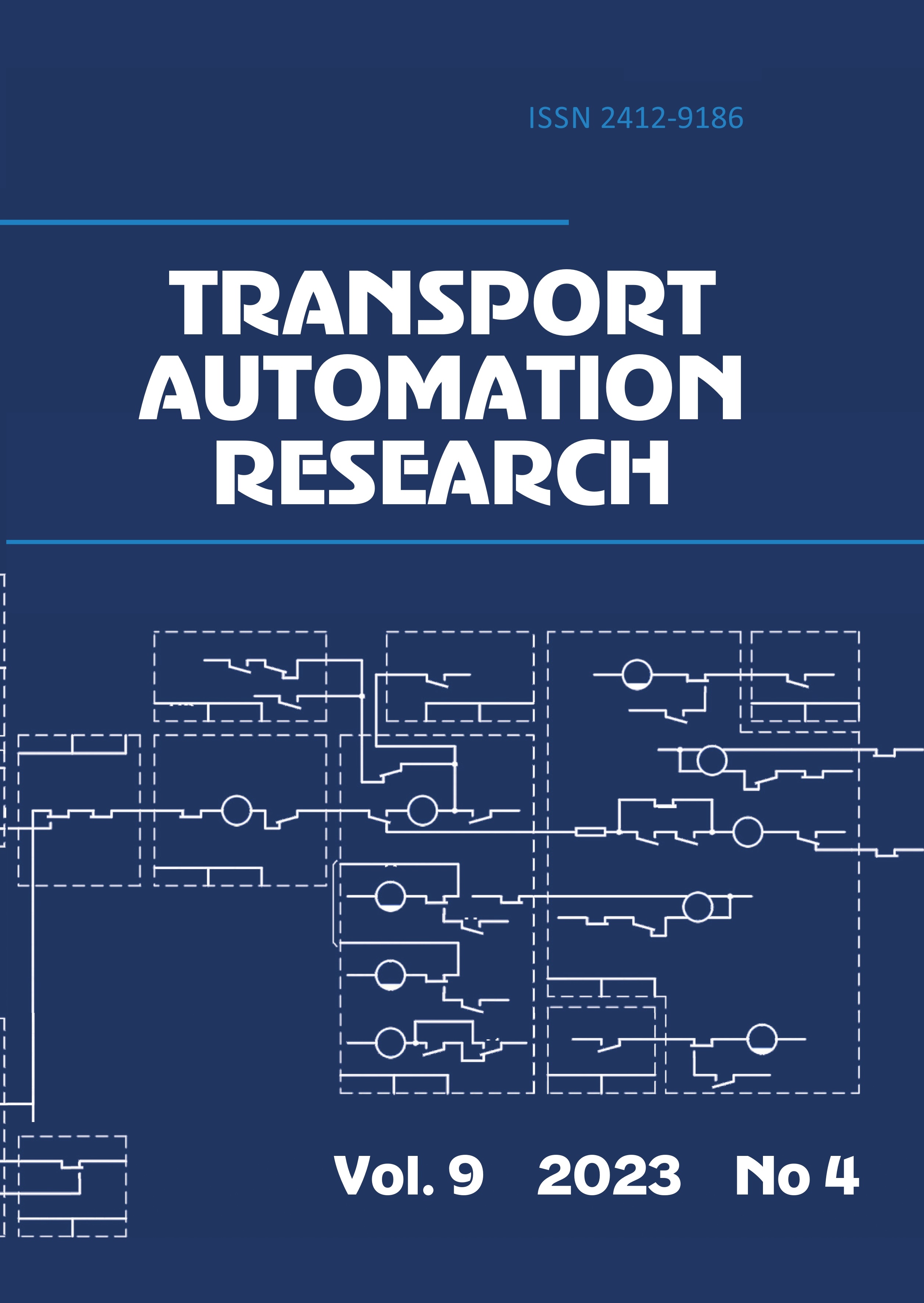Russian Federation
Russian Federation
Russian Federation
Russian Federation
UDC 656.021.2
The main scientific result of the work is a model implemented in the form of a software package capable of automatically modeling traffic without human intervention, processing data coming from intelligent cameras installed at intersections. Within the framework of the study, the possibility of modeling traffic flows in conditions of incompleteness of the initial data has been confirmed, and specifically, the possibility of modeling flows at intersections, focusing solely on information about traffic in related areas. The study confirms that traffic modeling based on limited data in the future can become a tool of traffic management. The mean squared error of modeling under conditions of incomplete initial data is 3,66, the correlation coefficient between real and simulated data is 0,7, which corresponds to the average degree of coincidence of the results. It is appropriate to emphasize that, when modeling a particular intersection, the correlation coefficient has reached 0,996, which indicates a significant accuracy in modeling this intersection. In two experiments, the correlation coefficients are in the ranges of confidence intervals, which also indicates sufficient convergence of the simulation results. The results of the study are of practical importance with the prospect of determining the optimal parameters of traffic flow control on the model at local time intervals of approximately several tens of minutes. The development of the model is planned in the direction of its use to create adaptive algorithms for controlling traffic light objects at intersections. This step will improve the efficiency of transport infrastructure management to changing traffic conditions.
modeling of traffic flows, traffic, Simulation of Urban Mobility, data averaging interval
1. Sal'nikova A. D. Formirovanie sistemy transportno-peresadochnyh uzlov v gorodskoy aglomeracii / A. D. Sal'nikova, A. V. Banite, D. G. Plotnikov i dr. // Avtomatika na transporte. - 2023. - T. 9. - № 1. - S. 87-98.
2. Makarov I. V. Sovershenstvovanie upravleniya transportnymi potokami goroda s ispol'zovaniem imitacionnogo modelirovaniya / I. V. Makarov, R. G. Habibullin, K. A. Shubenkova i dr. // Materialy 4-y Vserossiyskoy nauchno-prakticheskoy konferencii po imitacionnomu modelirovaniyu IMMOD 2009. - SPb.: Dom uchenyh im. M. Gor'kogo. - 2009.
3. Shaharuddin R. A. Controlling Traffic Congestion in Urbanised City: A Framework Using Agent-Based Modelling and Simulation Approach / R. A. Shaharuddin, Md Yu. Misro // ISPRS Int. J. Geo-Inf. - 2023. - Iss. 12(6). - P. 226.
4. Alghamdi T. A. Comparative Study on Traffic Modeling Techniques for Predicting and Simulating Traffic Behavior / T. Alghamdi, S. Mostafi, G. Abdelkader et al. // Future Internet. - 2021. - Iss. 14. - P. 294.
5. Yedavalli P. Microsimulation analysis for network traffic assignment (MANTA) at metropolitan-scale for agile transportation planning / P. Yedavalli, K. Kumar, P. Waddell // Transportmetrica A: Transport Science. - 2021. - Pp. 1278-1299.
6. Kuznecov T. A. Optimizaciya dvizheniya transportnogo potoka na reguliruemom perekrestke s ispol'zovaniem imitacionnogo modelirovaniya / T. A. Kuznecov // Politehnicheskiy molodezhnyy zhurnal. - 2022. - № 07(72).
7. Zaharov Yu. I. Osnovnye sovremennye instrumenty imitacionnogo modelirovaniya transportnyh potokov / Yu. I. Zaharov, E. S. Karnauh // Vіsnik pridnіprovs'koї derzhavnoї akademії budіvnictva ta arhіtekturi. - 2023. - S. 87-98.
8. Di Sh. Calibrating stochastic traffic simulation models for safety and operational measures based on vehicle conflict distributions obtained from aerial and traffic camera videos / Sh. Di, G. Jingqin, Y. Di et al. // Accident Analysis and Prevention. - 2023. - Iss. 179.
9. Romashova A. A. Analiz tehnologiy sbora dannyh o parametrah dvizheniya transportnyh potokov / A. A. Romashova // Forum molodyh uchenyh. - 2021. - № 5(57). - S. 298-303.
10. Altshuler Ya. Augmented Betweenness Centrality for Mobility Prediction in Transportation Networks / Ya. Altshuler, R. Puzis, Yu. Elovici et al. // Finding Patterns of Human Behaviors in Network and Mobility Data. - 2011. - P. 671.
11. Ross S. M. Introduction to Probability and Statistics for Engineers and Scientists / S. M. Ross. - University of California, Berkeley. - 2004. - P. 179.
12. Rodgers J. L. Thirteen Ways to Look at the Correlation Coefficient / J. L. Rodgers, W. A. Nicewander // The American Statistician. - 1988. - Vol. 42. - Iss. 1. - Pp. 59-66.
13. Hotelling H. New Light on the Correlation Coefficient and its Transforms / H. Hotelling // Journal of the Royal Statistical Society, Series B (Methodological). - 1953. - Vol. 15(2). - Pp. 193-225.
14. Fisher R. A. Statisticheskie metody dlya issledovateley: monografiya / R. A. Fisher. - M.: Gosstatizdat, 1958. - S. 42.










